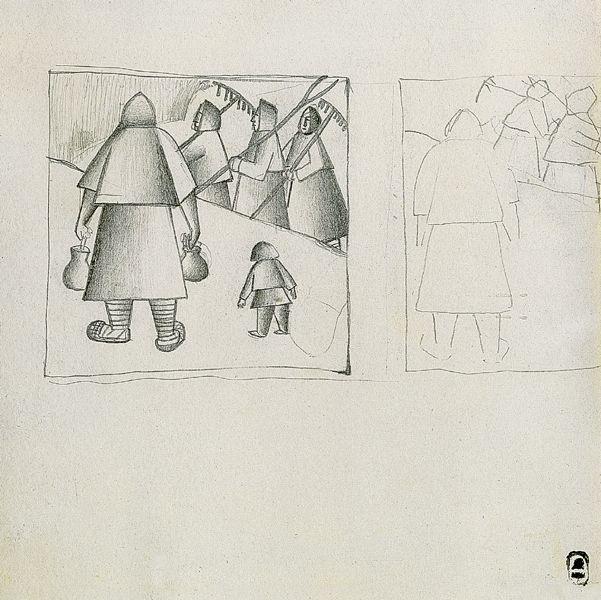Description
The painting ** "in the field" (1912) ** of ** Kazimir Malevich ** presents a wonderful opportunity to explore the artistic transition of one of the pioneers of modern art. Malevich, known for his suprematist works, was in a phase of experimentation that glimpsed its evolution towards total abstraction, a characteristic that would define its artistic legacy.
In this work, Malevich uses a composition marked by juxtaposed geometric shapes and a vibrant chromatic palette. The painting, which in the first instance perhaps does not align directly with its famous suprematist series, already shows the indications of visual language that Malevich would develop later. In ** "in the field" **, there is a mixture of plans and perspectives that, although referential to figurative elements, are already moving away from conventional representation.
The use of color in the work is particularly remarkable. Malevich displays very intense tones such as red, blue, yellow and green, which harmonize and contrast at the same time, endowing the scene with a vibrant and almost untimely energy. These colors not only dictate the atmosphere of painting but also highlight the geometric shapes that populate the composition.
In the visual aspect, elements that could represent human beings working in the field can be vaguely identified, although these figures are stylized to the point of almost losing their figuration. The scene suggests a day of rural activities, with forms that allude to agricultural tools and planted landscapes. The interaction of these forms with the landscape creates a sense of dynamism and movement, while acute lines and angles print a sense of order and structuring.
Malevich, through this work, inserts a kind of visual symphony where the field becomes not a traditional pastoral scenario, but into a space where the forces of modernity and tradition are intertwined. This is congruent with the historical-intellectual context of the time, where the relationship between man and industrialization began to redefine himself.
Although "in the countryside" he is not as well known or referenced as his subsequent suprematist works, he is still a crucial piece to understand Malevich's evolution. It synthesizes his aesthetic and conceptual concerns of that moment, showing him as an artist who, while he was on a threshold of change, already glimpsed the infinite possibilities of form and color.
This painting invites us to appreciate the versatility of Malevich and recognize the importance of its early explorations. In the artist's general trajectory, "in the field" it may not be his most iconic work, but it is a piece that illuminates the path to its subsequent theoretical and pictorial creation. Malevich's ability to capture the essence of a field scene and transform it into a game of shapes and colors is the undoubted proof of his creative genius and his role as an precursor to abstract art.
KUADROS ©, a famous paint on your wall.
Hand-made oil painting reproductions, with the quality of professional artists and the distinctive seal of KUADROS ©.
Art reproduction service with satisfaction guarantee. If you are not completely satisfied with the replica of your painting, we refund your money 100%.

